Rafflesia
The Rafflesia refers to a specific genus of plants found only in South-East Asia, specifically the Malay Peninsula, Borneo, Sumatra and in the Philippines. Named after Sir Thomas Stamford Raffles, leader of the expedition that found it which also happens to be the founder of Singapore.
Physical Appearance and Smell
This particularly rare plant is a parasite, thereby produces no leaves, stems or roots. It lives within the vines of plants in the Tetrastigma genus, and only in primary (i.e. undisturbed) rainforests. The Rafflesia is easily identified by its massive reddish-brown flower, with diameters ranging from a meter to twenty centimeters across. Inside is a spiked disk, to which either stigma or stamens are attached, hereby denominating the sex of the plant. The flowers also has a very bad smell akin to rotting flesh, which is instrumental in attracting insects for pollination. The “corpse flower” moniker is shared by this plant and another, the Titan Arum. It has become the official state flower of Indonesia, Sabah (a state within Malaysia) and Surat Thani Province of Thailand.
Reproduction
The Rafflesia is a parasite. Parasites don’t produce chlorophyll (plant food), so it needs its nutrition from an external source. Towards this end, the Rafflesia’s body actually consists of thread like growths within the vines of the plant noted above. When it is ready to reproduce, the growths form a lump, which develop into something that looks like a brown cabbage. This doom cabbage bursts through the host plants’ bark, where it waits for around a year before unfurling into the familiar sight of a monstrous red-brown flower with the bad smell. Again, insects will be attracted to the smell for the purposes of pollination. However, pollination among Rafflesia is complicated by the fact that they are unisex, and are mostly in close quarters with plants of its own sex. The plants also don’t always mature and open simultaneously, plus the flowers only last for less than a week. To mitigate this, the Rafflesia produces round fruits roughly fifteen diameters in length filled with smooth flesh and literally thousands tiny hard-coated seeds. Squirrels and tree shrews seem to take a liking to these fruits, hence becoming their distributors. The writer does not know how good the fruits taste.
The Problem With Conservation
The Rafflesia can only be found in South-East Asia, in untouched rainforests. It is a parasite with no leaves, stem or roots. It takes almost a year before its flower opens up, which lasts barely a week. Pollination between male and female Rafflesia if specimens from both sexes are blooming at the same time. It must attract flies or other insects to pollinate them within this short time frame. However, some species of Rafflesia smell like roadkill, others for only a few hours, while a few smaller species barely smell at all. In short, a parasitic life, heavily specialized biological requirements, a long time to bloom, inherent rareness, make the rafflesia very vulnerable o conservation efforts. Increasing habitat loss, illegal harvesting, or simply unintentional trampling can only make it harder.
It must be remembered that nature’s many oddities are now dangerously nearing extinction, and measures must be taken to prevent specimens such as the Rafflesia genus from disappearing entirely.
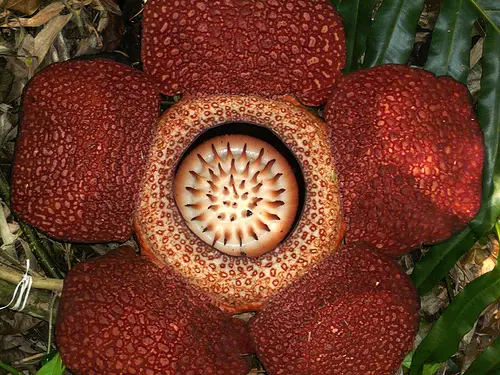
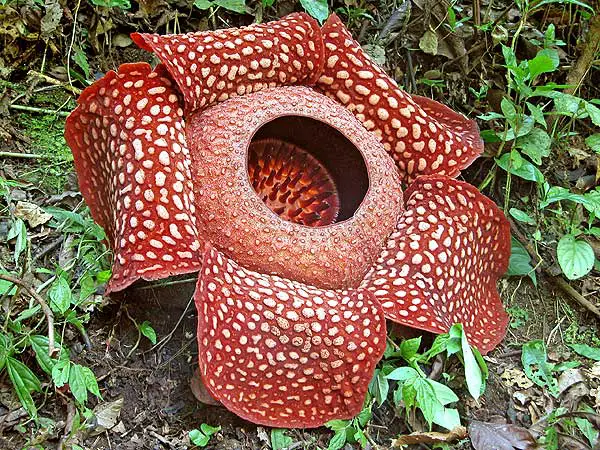
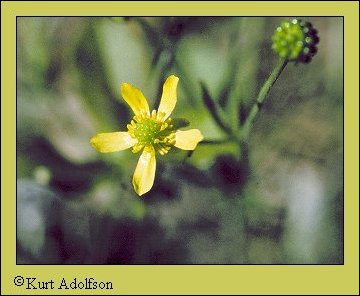
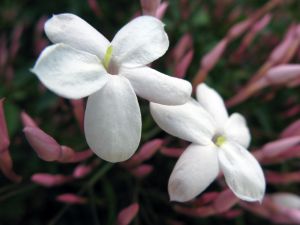
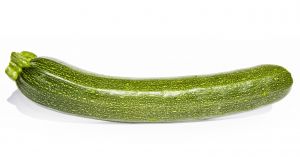
thang is that even english?,
I’m not quite sure what you are referring to, however the Rafflesia is the common name for this flower in English.